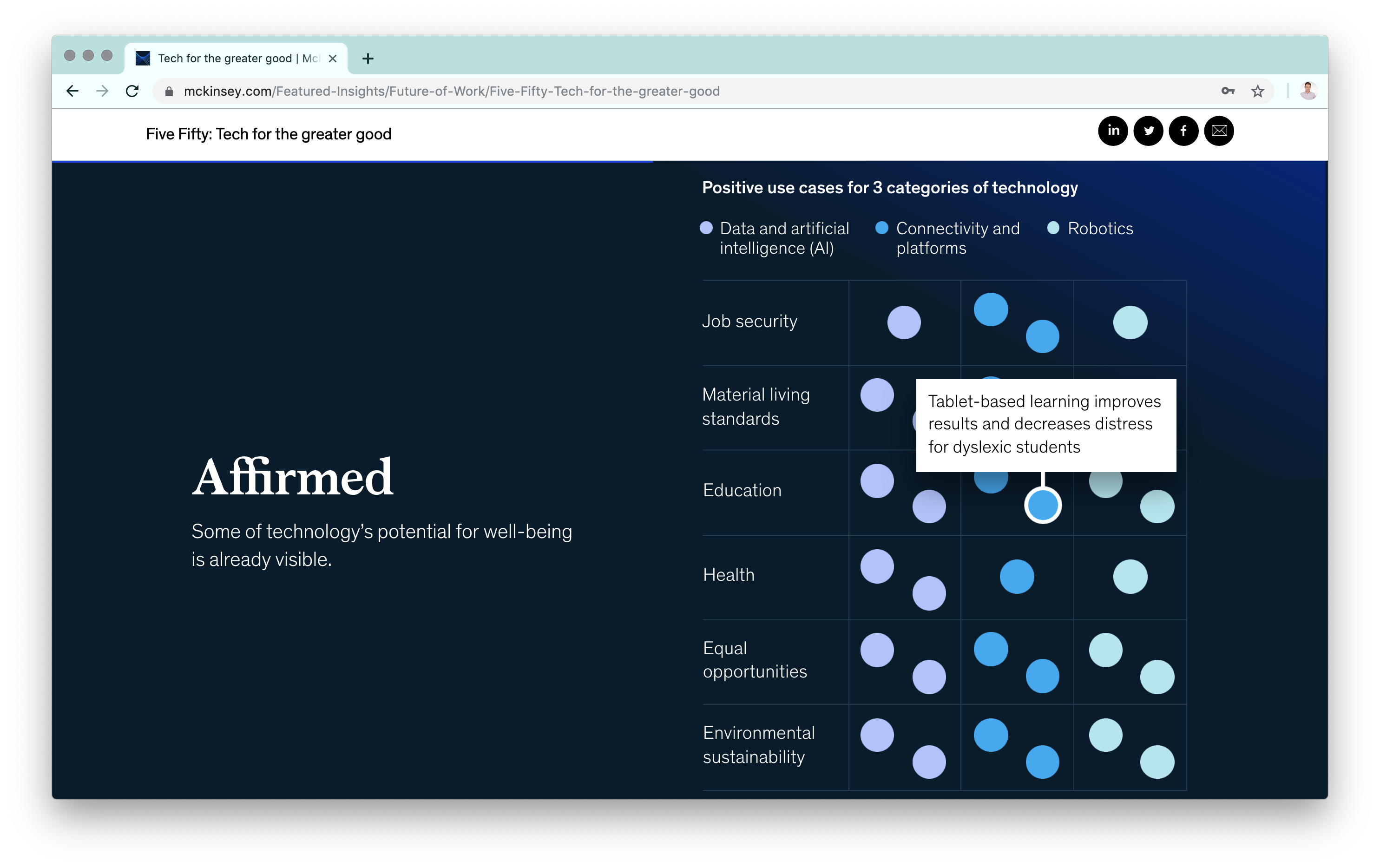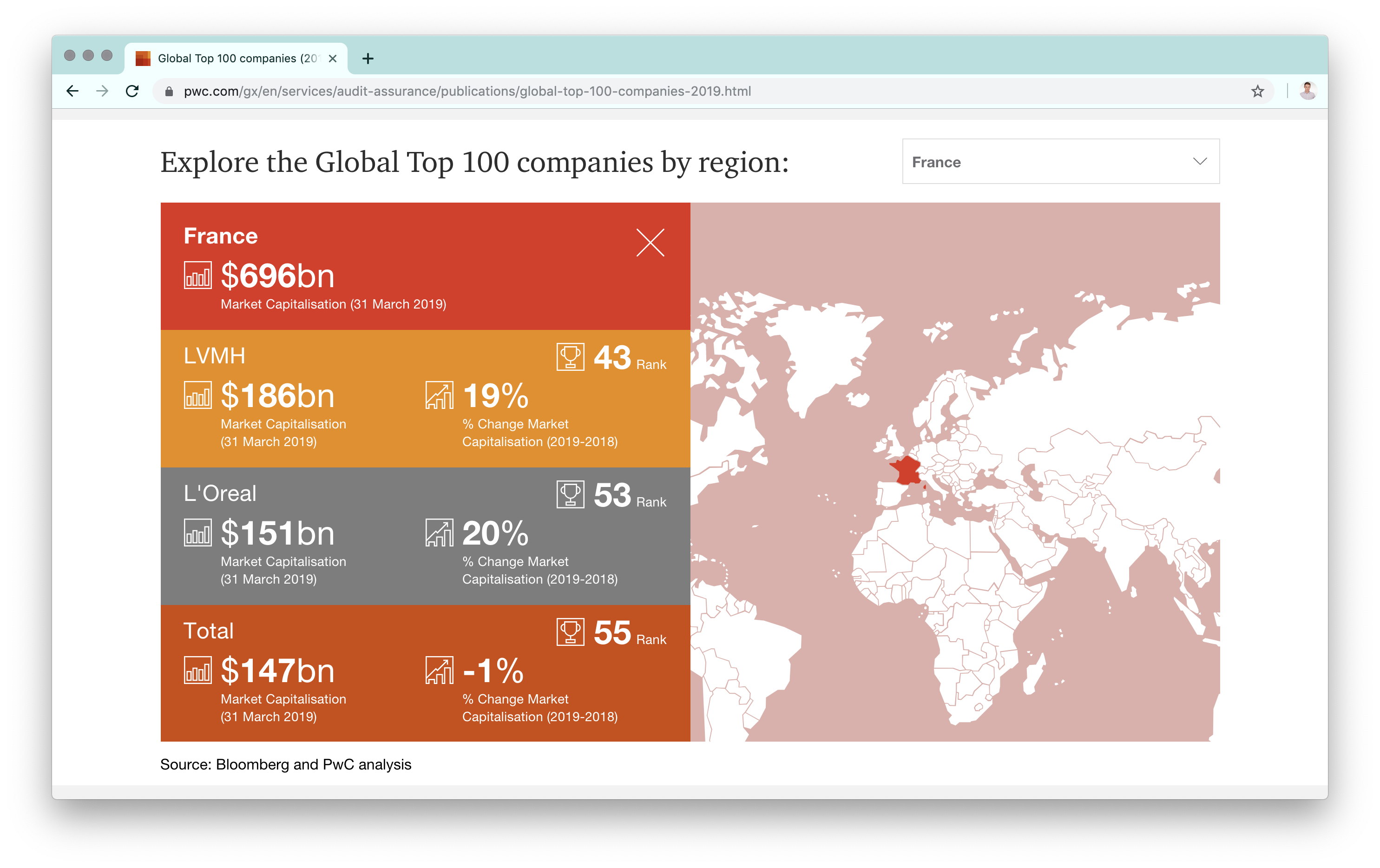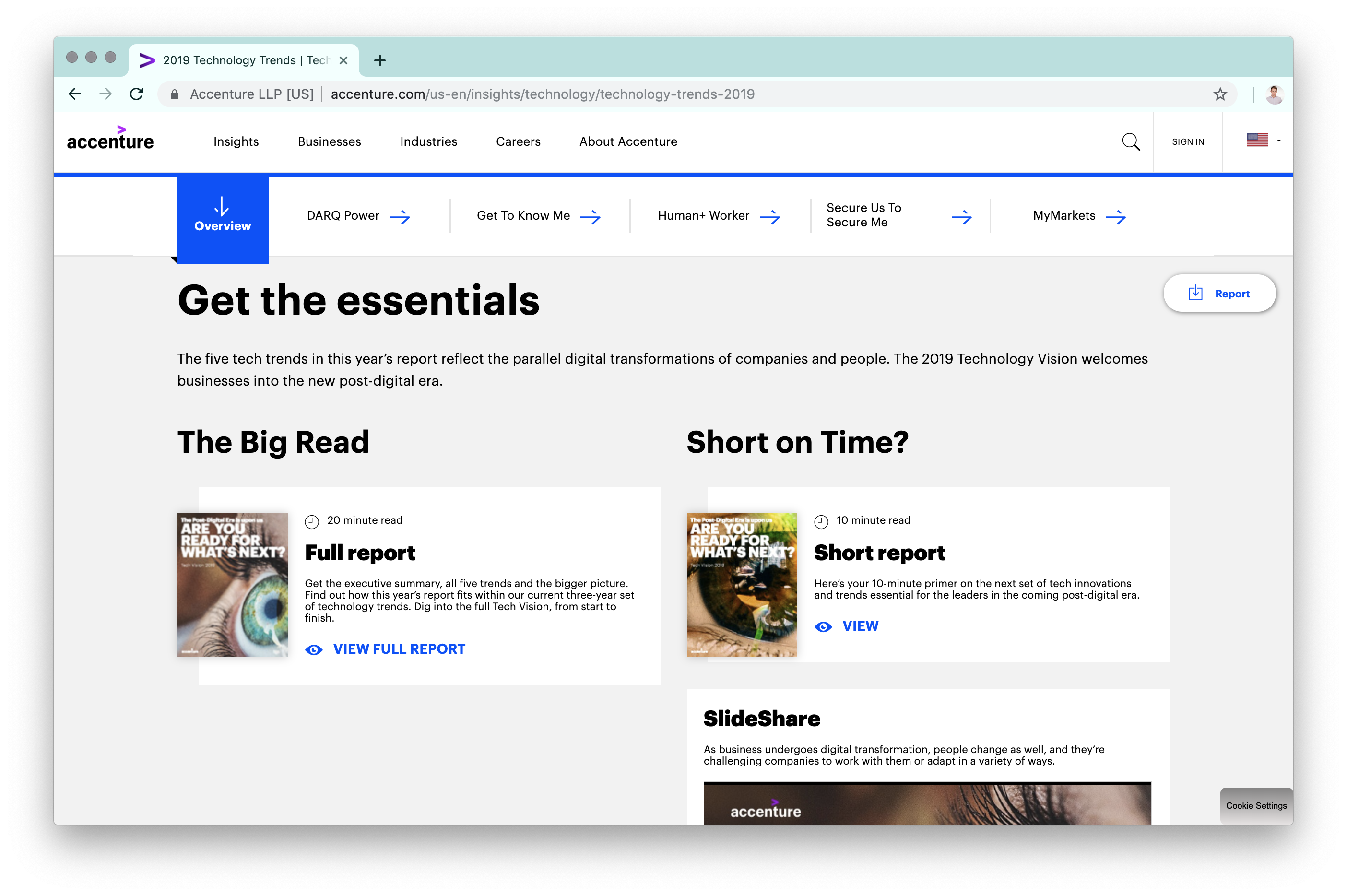Tailored online experiences that reflect relationship-dependent brands
Part 4: Tailored consumption – layered infographics and stacked content
February 3, 2020 • 7 minute read

This is the final part in our series exploring how relationship-dependent brands need to tailor their customers’ online experiences as they would in “real life”. During the four parts, we explore trends of content customization, live chat and chatbots, as well as methods of disseminating content to provide more personalized, meaningful experiences for clients on digital platforms.
In this final instalment we explore how infographics and the distribution of thought leadership content can be tailored to individual or segmented audiences to further build positive client experiences.
. . .
Infographics were all the rage ten years ago, helping businesses to illustrate their messaging or highlight their insight more clearly. Now they’ve reached a level of sophistication whereby brands can use them more cleverly. They are showing deeper levels of audience empathy and understanding, in order to provide different perspectives and serve up information that’s most valuable to individual users.
Take a look at McKinsey’s latest Five Fifty report on Tech for the greater good. Whilst an interesting read, it goes a strategic step further and encourages users to uncover more in-depth analysis and opinion around specific segments, such as health, education or environmental sustainability. As well as being an immersive and visually pleasing piece of content, it clearly seeks to engage certain target audiences with interests in specific areas of business or society.

Fig. 4 – Tech for the greater good (McKinsey & Company) interactive infographic allows users to reveal segmented data
Beyond infographics
A simple extension to the scope of an infographic, for example, is often not difficult to achieve. Once you have clearly identified your target audience(s) and understood their current interests, trends and potential pain points, simply design mechanisms for users to explore primary ideas in more detail and from different perspectives.
Examples can include opinions from experts in particular industries, or visuals that illustrate findings with a particular sector lens or that are broken down by location or demographic.
McKinsey and PwC are just two of many brands that consistently produce well-considered interactive infographics that enable their audiences to explore data that’s relevant to them. PwC reports such as the Global Top 100 companies are often deployed as a hub of content – in this case, the first infographic shown gives the user the opportunity to explore the information by region, which reveals region-specific data, leading companies and change from previous years for that region.
When planning or undertaking research ahead of a piece of thought leadership, consider whether widening research criteria and data points could allow for deeper exploration of particular insights that your primary audiences might value.

Fig. 5 – Global 100 Top companies interactive infographics (PwC) encourages users to explore data by country and industry
As well as being engaging for audiences to explore, the underlying concept saves the user time and effort searching for information and heightens the overall experience. Serving up specifically relevant information for the user (once they have chosen what they wish to view) demonstrates how the brand truly understands what the user needs.
. . .
Just as content strategy is generally about how to provide high value content to readers by understanding their needs, rather than directly writing about products or services, the same perspective should be considered when designing consumption tactics and planning how users experience content. This is especially important for brands that outwardly assert their deep care and understanding of their clients.
A highly effective means of demonstrating empathy and understanding of your clients’ consumption habits is to diversify ways in which a piece of content is disseminated. This doesn’t necessarily mean ‘only do video because my clients watch videos’. Instead, your go-to-market campaign should include a video component alongside other forms of media. Even the simplest of empathy maps or audience personas can shed light on how your audience interacts with a platform or consumes content. Once you have a concrete idea of who your audiences are, where they are, what they’re looking for, how and why they’re looking for it, you will be in a position to define which types of media will best resonate with your audience. In short: know your audience’s content consumption habits and aim to cater for all.
For example, Accenture’s 2019 Technology Trends report is served-up as an immersive hub, but much of the experience is simply different ways of communicating the same piece of content. A brief/abstract of three top-line bullets provides high-bounce-rate visitors with a quick overview, tabs provide shortcuts to chapters and a downloadable PDF report (also accessible via an anchored download button) allows ‘read-it-later’ visitors to print or pick up the report offline. On top of these, an energetic video – with text subtitles and a full transcript – provides an audio-visual introduction to the initiative. Then, past a full landing page of quotes and related links, users are presented with three ‘essential’ options: the ‘big read’ full report, with a 20 minute read time indicator, the short 10 minute version and an embedded SlideShare version.

Fig 6. Technology trends 2019 report (Accenture) caters for multiple audience through a range of content types and formats
This may all seem excessive, but presented with clear design and signposting, it caters for a wide variety of audience consumption methods. CTAs such as “Short on time?” or “Get the essentials” suggest to time-poor readers that there’s a quick version tailored for their next 10 minute break. Video content can be filtered down across social channels, giving fast-scrolling followers the two second exposure they need to engage. Then there’s the accessibility aspect – ensuring video has subtitles and a separate text transcript. And we haven’t touched on the SEO benefits of publishing different media on multiple platforms that repurpose core content for different consumers.
What Accenture doesn’t do here is allow users to explore in more depth different perspectives, industries or geographies. It doesn’t serve up content to the personal level of the news websites discussed earlier, so it’s still rather one-dimensional in that sense. But there will be dissemination tactics that should apply to your branded content as well – whether it’s as simple as a read time indicator or considering audio/audio-visual versions of content.
The place to start is undoubtedly understanding your audience. Personally, I like to use Pocket to curate articles, reports and branded content. The Google Chrome browser extension and app are easy to use. I then either read on my phone or laptop, or use the Pocket audio tool to listen to a narrated version. Therefore if presenting interactive infographics in a ‘long read’ version of a piece of content, it would be important to include insights and key findings within the copy for me as an audio consumer. Your audiences will consume content in different ways.
. . .
We are seeing fast-moving content platforms give more power to users to curate their own feeds – both in user-generated content and targeted advertising. With capabilities to hide, unfollow and ‘see less of’ content that’s not interesting or useful to them, users are growing accustomed to choosing what content is served up to them. Convenience is key in the digital age, suggests Raconteur, reiterating how time-poor and eager for personalized experiences we all are.
Meanwhile, industries that still strive to be customer-focused sometimes don’t consider the importance of relationships outside of face-to-face client service, such as digital user experience. For brands that pride themselves in being all about the client and the relationship, with increased competition for attention, these experiences now need to be better than ever.
If your priority as a business is to understand your audience and provide personal services and tailored experiences to your clients, as we see being successfully done in face-to-face moments, ensure your users’ online experience doesn’t let your brand down.
. . .
Stay tuned for the full Special Report coming soon
Interested in finding out how your business can provide tailored online experiences that reflect your brand’s relationship-driven ethos?